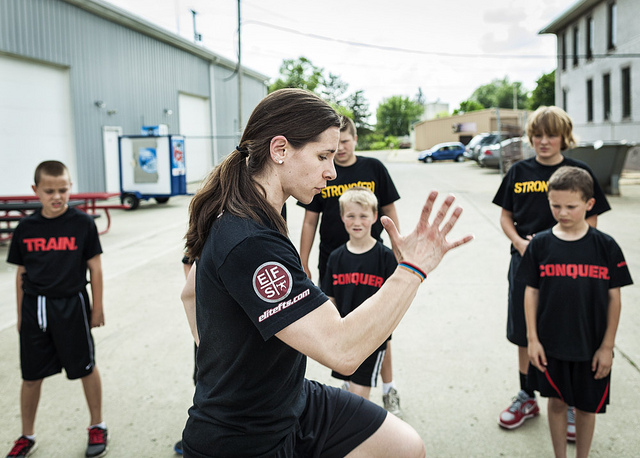
This is part two of a two-part series.
In my last article, I outlined the four qualities that must be trained to improve speed—relative body strength, hip stability, elasticity/reactivity, and rate of force development. I quickly touched on the subject of developing strength in a hip hyperextended position. In my opinion, this can unlock the speed potential of any athlete.
A few years back I was talking to my good friend, Jeff Howser (speed and conditioning coordinator, Duke University), and he brought up a very interesting point. Jeff explained that at toe off, the femur of the plant foot is approximately 20–30 degrees past plane with the hip. He then asked me how I train this position. I didn’t have an answer for him.
You see, the problem with standard weight lifting exercises is that the athlete will only achieve hip extension. Whereas in movement, force is applied into the ground at a hip hyperextended position. Take a look at the following picture of Tyson Gay. As you can see, at toe off, his femur is past his hip, and he is still applying force into the ground.
Now my question for you is, “How are you training that type of hip position?” For most of us, the answer is we aren’t. Look at the picture of this person performing a barbell squat. The hips only achieve extension, not hyperextension. Even exercises such as the lunge only allow hyperextension for a brief period of time. Then, the lead leg is used to decelerate the body.
Don’t get me wrong, the squat is a tremendous exercise, and I use it regularly in the training programs for my sprinters. However, you have to train unilateral hip hyperextension in order to maximize force application into the ground. Football 360, our training program for high school athletes, is completely centered around this idea.
In my opinion, the Prowler, standard sleds, and bands are the best means to train hip hyperextension. The following video is an example of how to use the Prowler to maximize hip hyperextension. The key is to drive the hips forward and completely push through the ground before initiating another foot contact. Once the athlete has mastered this movement, feel free to load up the weight for a greater strength effect.
Using a sled is another great means of teaching the athlete to push through the ground and obtain hip hyperextension. The following is a teaching progression that I use with all my athletes. First, we will train using a heavy sled and we’ll perform strict marches. This aids in hip stability, and the athlete can feel the hip hyperextension. Next, we will move to a skip using the sled (lighter weight). Once the athlete has mastered these positions, I will add some complexity to them with short sprints. I like to use the coaching cue of “pushing through the ground” when they sprint.
The following clip is an exercise that I got from Jeff Howser. Start the athlete in an upright position with one leg bent at the knee. Initiate hip extension with the plant leg and swing the opposite leg out and land in an isometric position. This is an amazing drill for upright running.
The last two videos come directly off the Football 360 program and are great drills for developing hip extension (knee step-up jump) and hip hyperextension (knee step-out jump). As the athlete develops greater hip strength, these exercises will aid in power development. The key coaching point is to make sure the athlete doesn’t break at the hips.
In my next article, I’ll discuss the concept of reactivity. Until then, read as much as you can, experiment, and dare to be creative!
Elite Fitness Systems strives to be a recognized leader in the strength training industry by providing the highest quality strength training products and services while providing the highest level of customer service in the industry. For the best training equipment, information, and accessories, visit us at www.EliteFTS.com.








